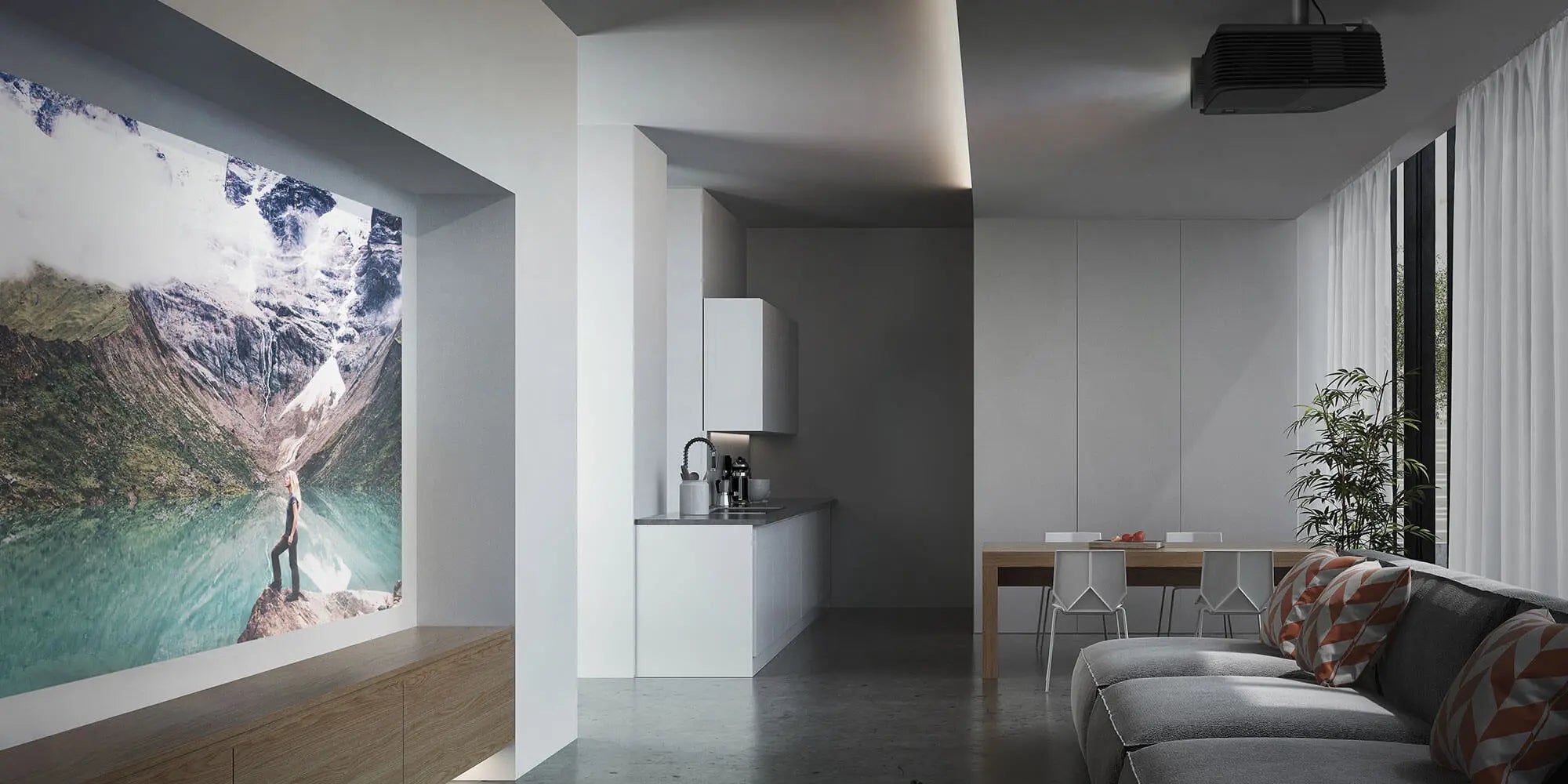Whats the Difference between a Home Theatre Projector and a Commercial Theatre Projector?
Have you ever wondered how they differ? You may be surprised at how simple the answer is. To understand the difference, you first need to look at a typical projector used in a Commercial Movie Theatre.

Movie Theater Projectors
Movie Theater Projectors are ultra-bright projectors with high resolution and of course they project onto a very large screens which can be up to 40 meters long. Due to the large projection area requirements the commercial theatre projector needs to provide much greater brightness compared to what a Home Theatre Projector is required to produce.
Home theater projectors and commercial theater projectors are designed for different environments and purposes, and they have some key differences:
Difference Number 1 - Brightness
Commercial theater projectors are typically much brighter than home theater projectors. This is because commercial theaters are larger and require more brightness to create a clear, bright image on a large screen. Theatre projectors are specifically crafted to have high brightness so that people sitting in the last row can see clearly. Typically, these projectors have 25,000 lumens or more of brightness whereas standard home theatre projectors have approximately 3000 - 5000 lumens.
In the world of projectors, you do pay for brightness and since cinemas are large, they require much greater lumens to project a better image from a greater distance onto a larger screen. This brings us to point number two the all-important projector resolution.
Difference Number 2 - Resolution
Commercial theater projectors often have much higher resolutions than home theater projectors. This is because commercial theaters often use larger screens, and higher resolutions are necessary to create a sharp, detailed image at such large sizes.
If you combine high brightness with low resolution this will result in a blurry video. Therefore, theatre projectors historically have required a higher resolution as well, mostly 4K.
When it comes to 4K resolution and projector brightness, a higher brightness is generally better for displaying a clear and vibrant image. This is because 4K resolution has more pixels than a lower resolution, which means that the image is more detailed and requires more brightness to display properly.
For example, if a projector has a lower brightness, it may struggle to display all the details in a 4K image, especially in a well-lit environment. In contrast, a brighter projector can display the image more clearly and with better contrast, making it easier to see all the details.
However, it's important to note that brightness alone doesn't guarantee a great image quality. Other factors such as contrast, color accuracy, and resolution all play a role in creating a high-quality image.
Difference Number 3 - Screen Size
Movie theatre projectors project onto screens as large as 40 meters. Large screens are used in cinemas and theatres, so, everyone in the audience can enjoy and see clearly. In contrast, home theatre projector screens are typically sized between 120” & 130” dependent on the home theatre projector model. This is also the sweet spot for pricing as when you go over 5000 lumens in the projectors brightness capabilities the price also jumps accordingly.
If you require a screen size over 130” you will typically need to move to a Large Venue Projector this type of projectors sits right between a commercial theatre projectors and your home theatre projector specifications.

Summary
In summary, while both types of projectors share some similarities, commercial theater projectors are typically larger, brighter, more durable, and more expensive than your home theater projector, with features tailored for commercial theater use.
The modern home theatre projector has been designed with your home environment in mind, as you generally don’t require projection screens over 150”. This means you don’t need to pay for highe brightness projectors to cover a larger projection area.
In conclusion the only major difference between your home theatre projector and a commercial theatre projector is the size of the image the projector can produce and the brightness required to cover the larger projection area.
Outside these two factors you will enjoy the same or even a better quality movie experience at home at a fraction of the cost.
Comparision of 3 Types of Movie Projectors
|
Projector Environment |
Commercial Theatre |
High End Home Theatre |
Entry Level Home Theatre |
|
Example Model |
Christie CP4230 (4K) |
Epson Home Cinema LS12000 |
Optoma UHD 35+ |
|
Projection Technology |
Movie theaters can either use DLP, LCD, or LCoS projection technology. |
3-Chip 3LCD Laser Projector |
DLP |
|
Resolution |
1280 x 720p and 4096 x 2160p (4K) |
4K PRO-UHD1 3840 x 2160 |
4k 3840x2160 |
|
Brightness |
22,000 Lumens |
2,700 Lumens |
3,600lumens |
|
Screen Size |
21 Meters |
1.4 To 9 Meters |
120” |
|
Number of Colours |
35.2 trillion |
1.07 billion colors |
|
|
Weight |
116 Kg |
13KG |
2.9kg |
|
Cost |
$110,000 |
$9,000 |
$2,000 |



